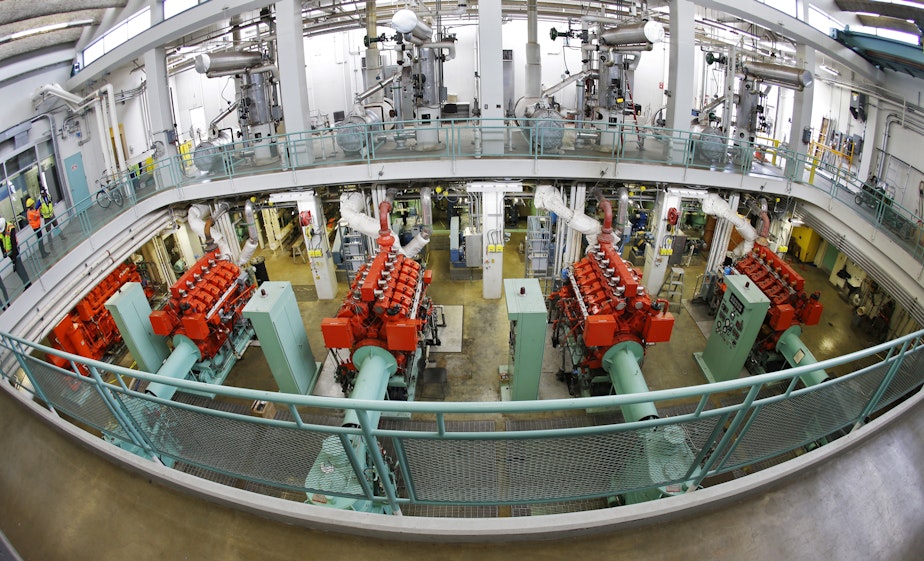Failed sewage pumps led to 2.1 million gallon spill into Puget Sound

King County officials have shed new light on the latest sewage spill to sully Seattle waters this summer: Backup pumps at Seattle's main sewage treatment plant failed during an overnight power outage.
Just after 1 a.m. on July 19, about 10,000 Seattle City Light customers from Ballard to South Lake Union lost power after a utility pole just southeast of the Ballard Bridge caught fire.
At the West Point sewage plant near Discovery Park, voltage weakened briefly—dropping to two-thirds of its proper level for less than a second, according to City Light.
The momentary disturbance was enough to cause wastewater-handling pumps at the plant to shut down.
Backup pumps quickly kicked in, but, according to King County officials, the backup pumps started vibrating badly, and they shut down too.
Over a 27-minute span ending at 2:05 a.m., 2.1 million gallons of untreated water and sewage were shunted around the treatment plant and straight to Puget Sound.
An outfall pipe spewed the mix 490 feet off shore and 35 feet deep.
Beaches in Seattle and in Kitasp County were closed for four days because of high levels of fecal coliform bacteria. Shellfish harvesting in parts of Bainbridge Island and Kitsap County remains closed.
Larry Altose with the Washington Department of Ecology said the agency’s investigation into the spill will take “at least some number of weeks.”
“We are worried about how vulnerable our wastewater system is to momentary power outages,” attorney Katelyn Kinn with Puget Soundkeeper said in an email.
She called this spill both “awful” and “frustrating,” since much bigger discharges routinely occur without media attention or public interest.
"'Normal' operations of King County’s wastewater system dumps 4.6 [million gallons] of sewage into Puget Sound on average every single day," Kinn said.
Almost any time it rains hard, outdated sewer pipes beneath Seattle are hit with more than they can handle, and a soup of untreated sewage and stormwater runoff goes directly into Puget Sound.
According to a report by the King County Department of Natural Resources and Parks, which runs the wastewater treatment system serving Seattle, such “combined sewage overflows” sent 1.7 billion untreated gallons into Puget Sound in 2017.
One storm on Dec. 19, 2017, sent more than 90 million gallons into the Duwamish River, in neighborhoods where lifespans are 13 years shorter than wealthier parts of Seattle.
“Shouldn’t that have been newsworthy?” Kinn said.
Correction, 9:50 a.m., 7/30/19: Power at the sewage plant fluctuated but did not go out entirely, according to Seattle City Light. A previous version of the story said the plant lost power.




